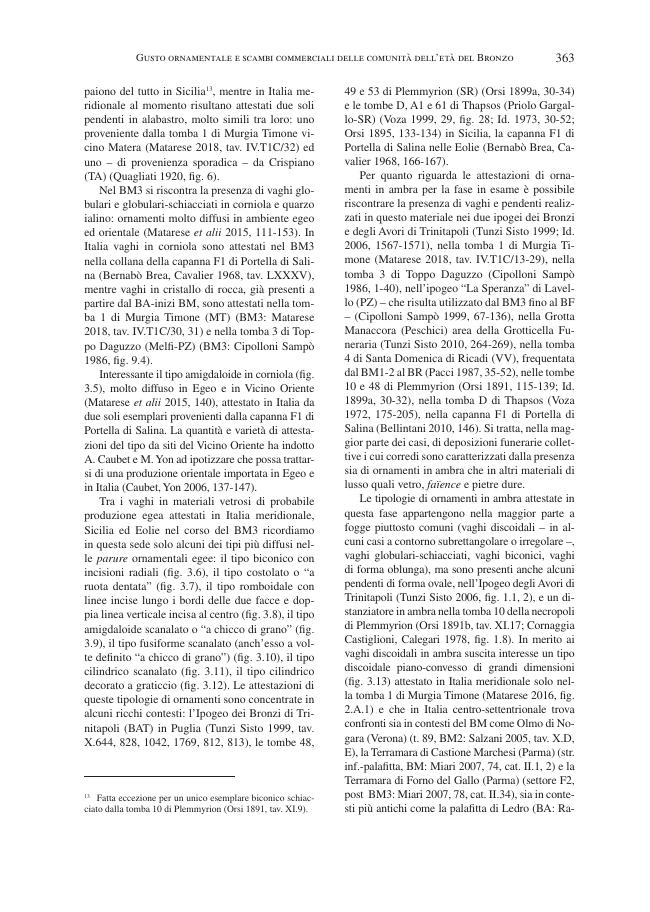Gusto ornamentale e scambi commerciali delle comunità dell'età del Bronzo in Italia meridionale, Sicilia e nelle isole del basso Tirreno
P. 345-356
Study of amber, glass, faïence, glassy faïence, gold, bronze and stone beads from the Bronze Age contexts of Southern Italy, Sicily and the southern Tyrrhenian islands has mapped out a picture of the production, exchange and use of ornaments during the II millennium BC. The purpose of this work (based on a PhD project) is to define the characteristics of the luxury goods trade during the Bronze Age, highlighting the influence exerted by the imports of exotic ornaments on the ornamental trends of the local populations. Study of the burial contexts led to identification of the status-symbol function that could be attributed to the ornaments. They were a sign of belonging to a local elite which was in contact with the Aegean merchants and was able to control the circuits of luxury goods, both domestic and foreign.
Commercial contacts with the Aegean during the Bronze Age led to the diffusion in Italy of Aegean beads (such as the faïence cogwheel, radially-grooved beads and wheat grain beads) but also of oriental beads (such as the amygdaloid carnelian bead from Portella di Salina). The importation of exotic luxury goods influenced local ornamental trends, causing changes over time. This work proposes an interesting perspective on the economic and socio-cultural changes that occurred during the Bronze Age, focusing on ornamental fashions and on analysis of the bead types, for some of which it was possible to deduce the area of origin and the distribution flows. [Publisher's text]
-
Articoli dello stesso fascicolo (disponibili singolarmente)
-
Informazioni
Codice DOI: 10.32097/1137
ISSN: 2282-457X



